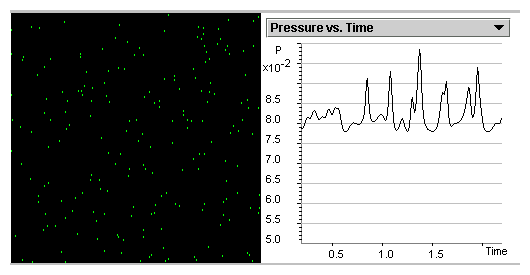|
Your objective is to:
Recognize the microscopic origin of the internal pressure
variations with temperature at constant volume.
You will be able to:
State Gay-Lussac's Law.
Construct a Pressure vs Temperature graph.
Extrapolate the slope on the graph to P=0 and explain the
significance of this point.
Determine the temperature range at which data is consistent with
Gay-Lussac Law.
Suggest reasons why deviations from Gay-Lussac Law occur.
| 
